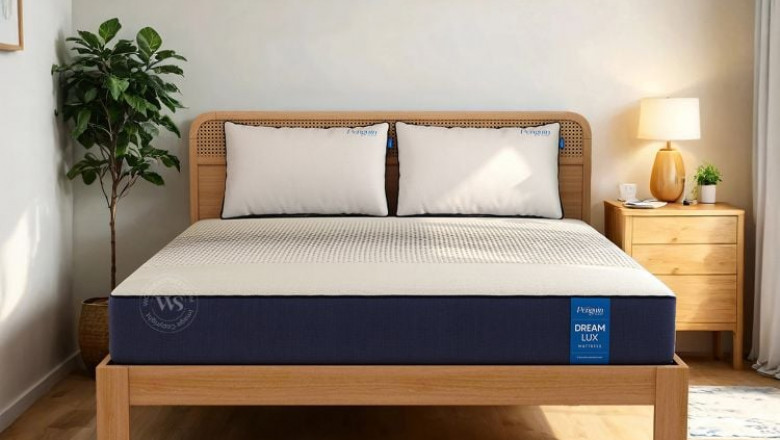views
A good night’s sleep starts with the right mattress. But with so many options available, choosing the perfect one can be overwhelming, especially when your sleeping position plays a crucial role in determining the type of mattress that suits you best. Whether you're a side sleeper, back sleeper, stomach sleeper, or someone who tosses and turns all night, finding the right mattress can make a huge difference in your comfort, spinal alignment, and overall sleep quality.
In this guide, we’ll explore how to choose the right mattress based on your sleeping style to help you make an informed decision.
1. Understanding Sleeping Styles
Before diving into mattress types, it’s important to understand the common sleeping positions and how they affect your body:
-
Side Sleepers
Most people sleep on their sides. This position can put pressure on shoulders and hips, so the mattress should offer enough cushioning to relieve pressure points while supporting proper spinal alignment. -
Back Sleepers
Back sleepers need a mattress that supports the natural curve of the spine. Too soft, and the hips may sink; too firm, and the back may arch uncomfortably. -
Stomach Sleepers
This is the least recommended sleeping position because it can lead to neck and back strain. A firm mattress is generally ideal to prevent the body from sagging into an unnatural curve. -
Combination Sleepers
These are people who change positions throughout the night. They need a responsive mattress that adapts to movement and offers balanced support in every position.
2. Best Mattress Types for Each Sleeping Style
Side Sleepers
Recommended Mattress Type: Memory Foam or Hybrid
Memory foam contours to the body, providing pressure relief to the shoulders and hips. A medium to medium-soft mattress is typically ideal.
Tip: Look for a mattress with zoned support and soft comfort layers to reduce pressure buildup.
Back Sleepers
Recommended Mattress Type: Latex or Innerspring
A medium-firm to firm mattress helps maintain spinal alignment without causing lower back pain. Latex offers responsiveness, while innerspring adds a bouncier feel.
Tip: Opt for mattresses with lumbar support zones for added comfort.
Stomach Sleepers
Recommended Mattress Type: Firm Foam or Hybrid
Stomach sleepers require firm support to prevent the midsection from sinking, which could strain the spine.
Tip: Avoid plush mattresses and instead go for firm options that keep your body flat and aligned.
Combination Sleepers
Recommended Mattress Type: Responsive Hybrid or Latex
A mattress with medium firmness and good motion isolation is key. Latex or hybrid designs make it easy to shift positions without disturbing your partner.
Tip: Consider a mattress with a balanced feel—firm enough for support, but cushioned enough for comfort.
3. Other Key Considerations
Body Weight
Heavier individuals generally need a firmer mattress to prevent sagging, while lighter individuals may prefer softer surfaces for adequate contouring.
Mattress Materials
-
Memory Foam: Great for contouring and pressure relief. Ideal for side and back sleepers.
-
Latex: Durable, responsive, and cooler than memory foam.
-
Innerspring: Traditional bouncy feel with strong support.
-
Hybrid: A blend of foam and innerspring, offering the benefits of both comfort and support.
Temperature Regulation
If you tend to sleep hot, choose a mattress with breathable materials like latex or cooling gel-infused memory foam.
4. Trial Periods and Warranties
Many mattress brands offer a trial period ranging from 30 to 100 nights. This allows you to test the mattress and return it if it doesn’t suit your sleeping style. Also, check for a warranty of at least 10 years to ensure long-term support.
5. Listen to Your Body
Ultimately, your comfort should guide your decision. If you wake up with aches and pains, or if you toss and turn trying to get comfortable, it might be time to switch your mattress. Visit stores, try out various options, and take advantage of home trials.
Final Thoughts
Choosing the right mattress based on your sleeping style is essential for restful sleep and better health. Whether you’re a side sleeper needing pressure relief or a back sleeper needing firm support, aligning your mattress choice with your sleeping habits can lead to deeper, more restorative sleep. Don’t rush the process—take time to understand your needs, explore different options, and invest in a mattress that supports both your body and your sleep goals.














Comments
0 comment